Discover 11 hidden attractions, cool sights, and unusual things to do in Pavia (Italy). Don't miss out on these must-see attractions: Certosa di Pavia, Visconti Castle, and Basilica di San Michele Maggiore. Also, be sure to include San Pietro in Ciel d'Oro in your itinerary.
Below, you can find the list of the most amazing places you should visit in Pavia (Lombardy).
Table of Contents
Certosa di Pavia
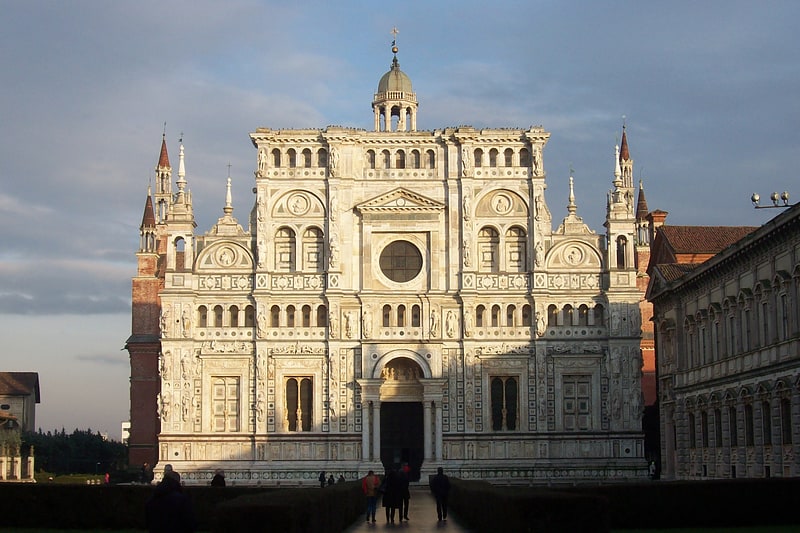
Imposing monastic complex found in 1396. The Certosa di Pavia is a monastery and complex in Lombardy, northern Italy, situated near a small town of the same name in the Province of Pavia, 8 km north of Pavia. Built in 1396–1495, it was once located on the border of a large hunting park belonging to the Visconti family of Milan, of which today only scattered parts remain. It is one of the largest monasteries in Italy.
Certosa is the Italian name for a house of the cloistered monastic order of Carthusians founded by St. Bruno in 1044 at Grande Chartreuse. Though the Carthusians in their early centuries were known for their seclusion and asceticism and the plainness of their architecture, the Certosa is renowned for the exuberance of its architecture, in both the Gothic and Renaissance styles, and for its collection of artworks which are particularly representative of the region.[1]
Address: Via del Monumento, 4, 27012 Pavia
Visconti Castle

Also known as: Castello Visconteo
Museum in Pavia, Italy. The Visconti Castle of Pavia is a medieval castle in Pavia, Lombardy, Northern Italy. It was built after 1360 in a few years by Galeazzo II Visconti, Lord of Milan, and used as a sovereign residence by him and his son Gian Galeazzo, first duke of Milan. Its wide dimensions induced Petrarch, who visited Pavia in the fall of 1365, to call it "an enormous palace in the citadel, a truly remarkable and costly structure". Adjacent to the castle, the Visconti created a vast walled park that reached the Certosa di Pavia, a Carthusian monastery founded in 1396 by the Visconti as well and located about 7 kilometres to the north.
In the 16th century, an artillery attack on Pavia destroyed a wing and two towers of the castle. The frescos that entirely decorated the castle rooms are today almost completely lost. The castle had been the seat of the Visconti Library until its transfer to Paris in 1499. Today, it hosts the Pavia Civic Museums.[2]
Address: Piazza Castello, 27100 Pavia
Basilica di San Michele Maggiore
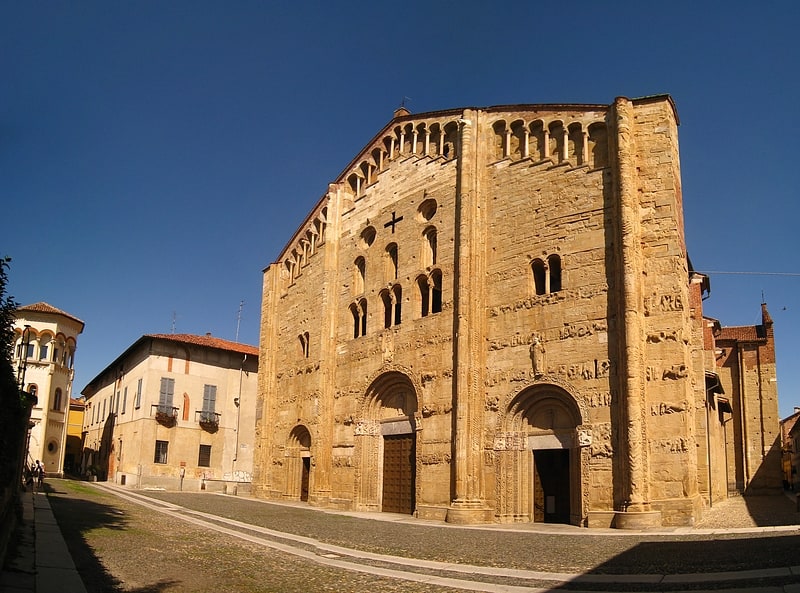
Basilica in Pavia, Italy. The Basilica of San Michele Maggiore is a church of Pavia, one of the most striking example of Lombard-Romanesque style. It dates from the 11th and 12th centuries.[3]
Address: Piazza S. Michele, 27100 Pavia
San Pietro in Ciel d'Oro
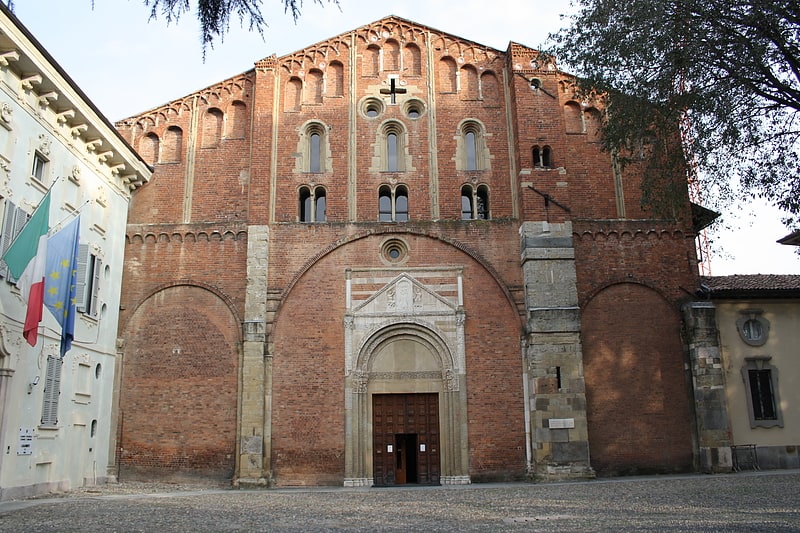
Basilica in Pavia, Italy. San Pietro in Ciel d'Oro is a Catholic basilica of the Augustinians in Pavia, Italy, in the Lombardy region. Its name refers to the mosaics of gold leaf behind glass tesserae that decorates the ceiling of the apse. The plain exterior is of brick, with sandstone quoins and window framing. The paving of the church floor is now lower than the modern street level of Piazza San Pietro in Ciel d'Oro, which lies before its façade.[4]
Address: Piazza S. Pietro in Ciel d'Oro, 2, 27100 Pavia
San Lanfranco
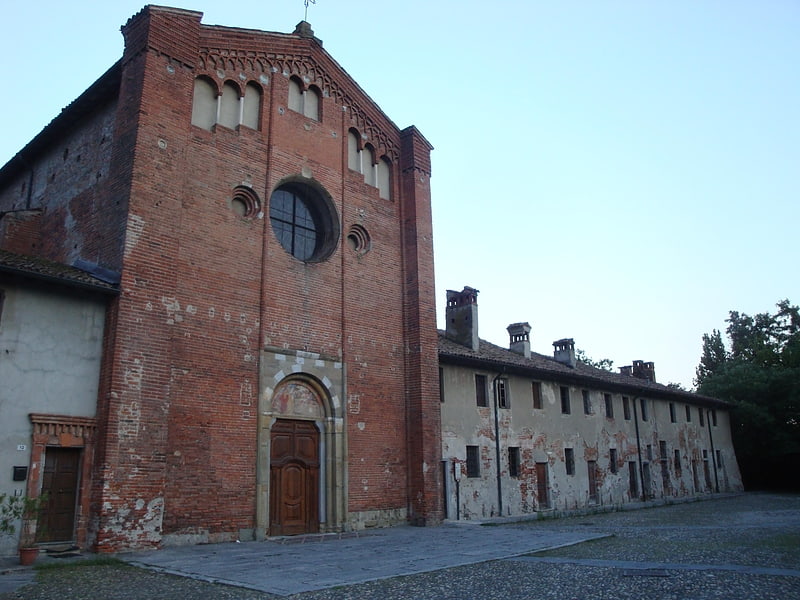
San Lanfranco is a Romanesque-style Roman Catholic church and former abbey, located on via San Lanfranco Vescovo, 4/6, just west of the town center of Pavia, region of Lombardy, Italy.[5]
Ponte Coperto
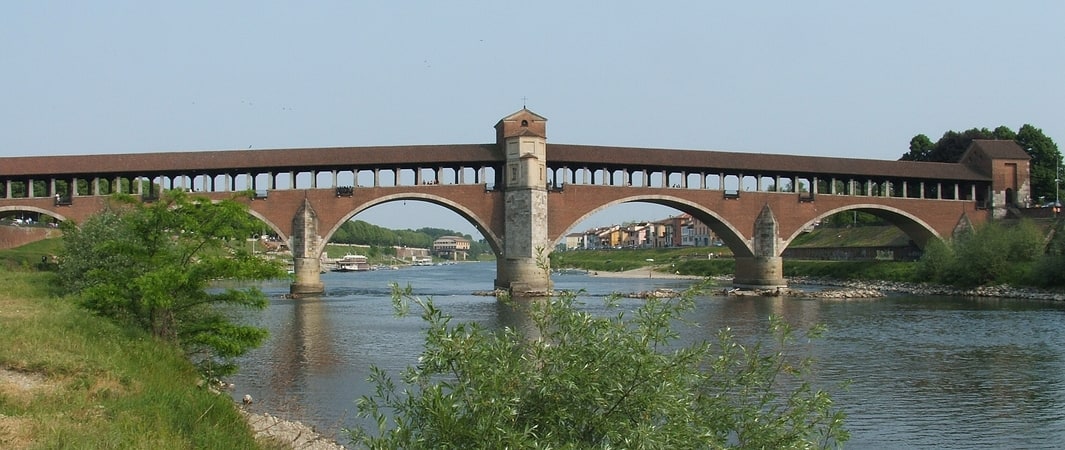
Charming covered bridge with chapel. The Ponte Coperto or the Ponte Vecchio is a stone and brick arch bridge over the Ticino River in Pavia, Italy.
The previous bridge, dating from 1354 (itself a replacement for a Roman construction), was heavily damaged by Allied action in 1945. A debate on whether to fix or replace the bridge ended when the bridge partially collapsed in 1947, requiring new construction, which began in 1949. The new bridge is based on the previous one, which had seven arches to the current bridge's five.
The current bridge, like its predecessor, bears a chapel.[6]
Address: Piazzale Ponte Coperto, Pavia
Pavia Cathedral
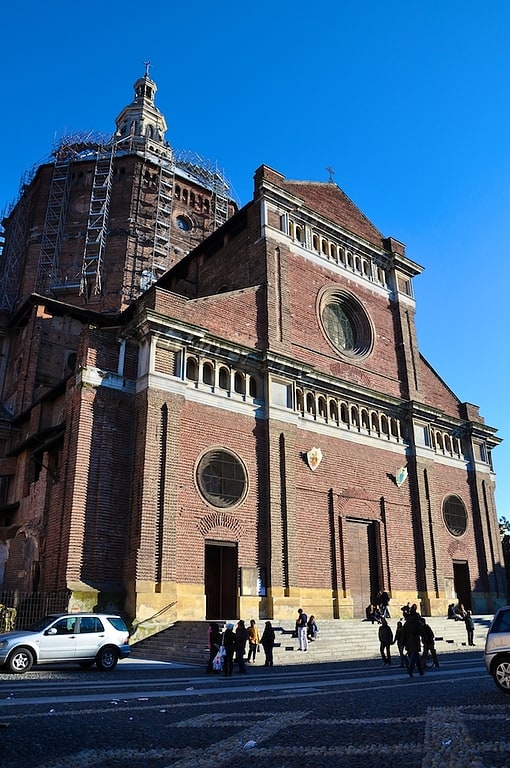
Also known as: Duomo di Pavia
Cathedral in Pavia, Italy. Pavia Cathedral is a church in Pavia, Italy, the largest in the city and seat of the Diocese of Pavia. The construction was begun in the 15th century on the site of two pre-existing Romanesque, "twin" cathedrals. The cathedral houses the remains of St. Sirus, first Bishop of Pavia, and a thorn purported to be from the Crown of Thorns worn by Christ. The marble facing of the exterior was never completed.
Until recently, next to the cathedral stood the Civic Tower (Torre Civica), known in 1330 and enlarged in 1583. It collapsed on March 17, 1989.[7]
Address: Piazza del Duomo, 27100 Pavia
Santa Maria di Canepanova

Catholic church in Pavia, Italy. Santa Maria di Canepanova is a Renaissance style Roman Catholic church located in central Pavia, region of Lombardy, Italy. Although in the past the design was popularly attributed to Bramante, the church was designed by Giovanni Antonio Amadeo.[8]
Address: Via Defendente Sacchi, 27100 Pavia
Orto Botanico dell'Università di Pavia
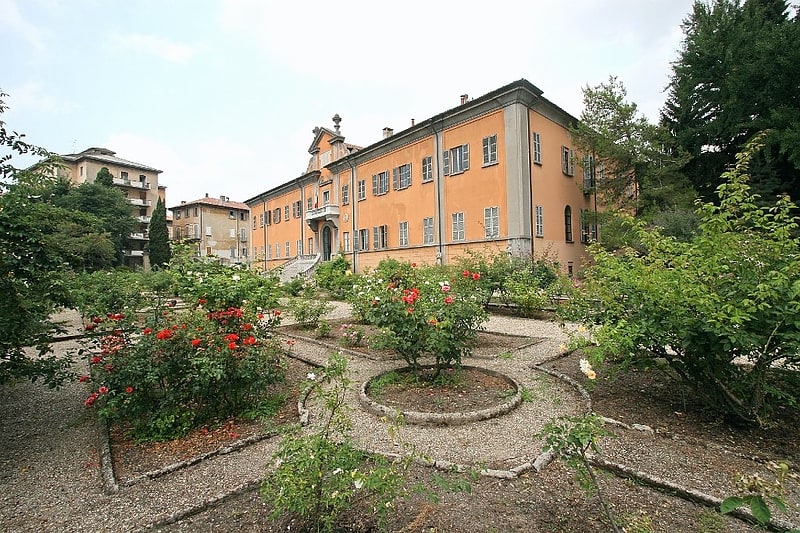
Also known as: Orto botanico di Pavia
Botanical garden in Pavia, Italy. The Orto Botanico dell'Università di Pavia also known as the Orto Botanico di Pavia, is a botanical garden maintained by the University of Pavia. It is located at Via S. Epifanio, 14, Pavia, Italy, and open weekdays. The botanical garden covers an area of about two hectares and has approximately two thousand different species of plants, that are organized in sections. The current director is Francesco Sartori.
The garden was begun in 1773 as a successor to Pavia's earlier Orto dei Semplici (established 1558). By 1775 the garden was in use, with its first wooden greenhouses constructed in 1776. Nocca Domenico organized and expanded the garden 1797–1826, adding collections to exchange seeds and plants, and building a masonry greenhouse to replace the earlier wooden structures. The garden was extensively damaged in World War II, after which its greenhouses were relocated to the main building's south side.
Today the garden contains about 2000 taxa, with major collections of aquatic plants, conifers, hosta, hydrangea, magnolia, medical plants, peat bog plants, and a rose garden. Its four greenhouses are as follows:
- Arid greenhouse (Serre Scopoliane, originally dating to 1776, 171 feet (52 m) long by 23 feet (7.0 m) wide) — a good collection of succulents (more than 500 species) with notable specimens of Ariocarpus furfuraceus, Ariocarpus trigonus, Copiapoa cinerea, Lophophora williamsii var. Caespitosa, Obregonia denegrii, and Welwitschia mirabilis, and many species of Frailea, Lobivia, and Rebutia, as well as 30 species of Lithops.
- Orchidaceae greenhouse — orchids from Central America and North America, plus ferns, Araceae, Bromeliaceae, and Tillandsia.
- Temperate greenhouse — plants of economic importance, fruit, etc.
- Tropical greenhouse (built 1974) — Araceae, Arecaceae, Euphorbiaceae, Liliaceae, Marantaceae, and Pteridofitas.
Address: Via Sant'Epifanio 14, 27100 Pavia
Natural History Museum
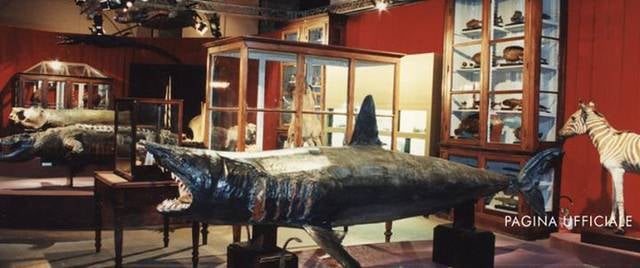
Also known as: Museo di storia naturale dell'Università di Pavia
Museum in Pavia, Italy. The Natural History Museum in Pavia, Italy is a museum displaying many natural history specimens, located in Palazzo Botta. Founded in 1775, it was one of the oldest museums of natural history in Europe. It currently forms the University of Pavia museum network, along with 5 other museums — the University History Museum, Museum of Electrical Technology, Museum of Archeology, Museum Camillo Golgi and Museum of Mineralogy.[10]
Address: Piazza Adorno Antoniotto Botta 9, 27100 Pavia
Chiesa di Santa Maria del Carmine
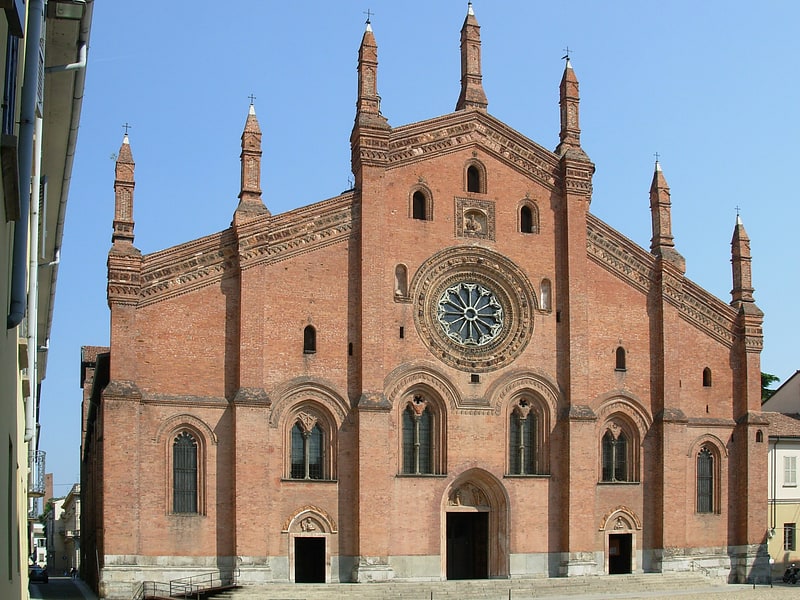
Catholic church in Pavia, Italy. Santa Maria del Carmine is a church in Pavia, Lombardy, northern Italy, considered amongst the best examples of Lombard Gothic architecture. It was begun in 1374 by Gian Galeazzo Visconti, Duke of Milan, on a project attributed to Bernardo da Venezia. The construction followed a slow pace, and was restarted in 1432, being finished in 1461.[11]
Address: Piazza del Carmine, 7/A, 27100 Pavia